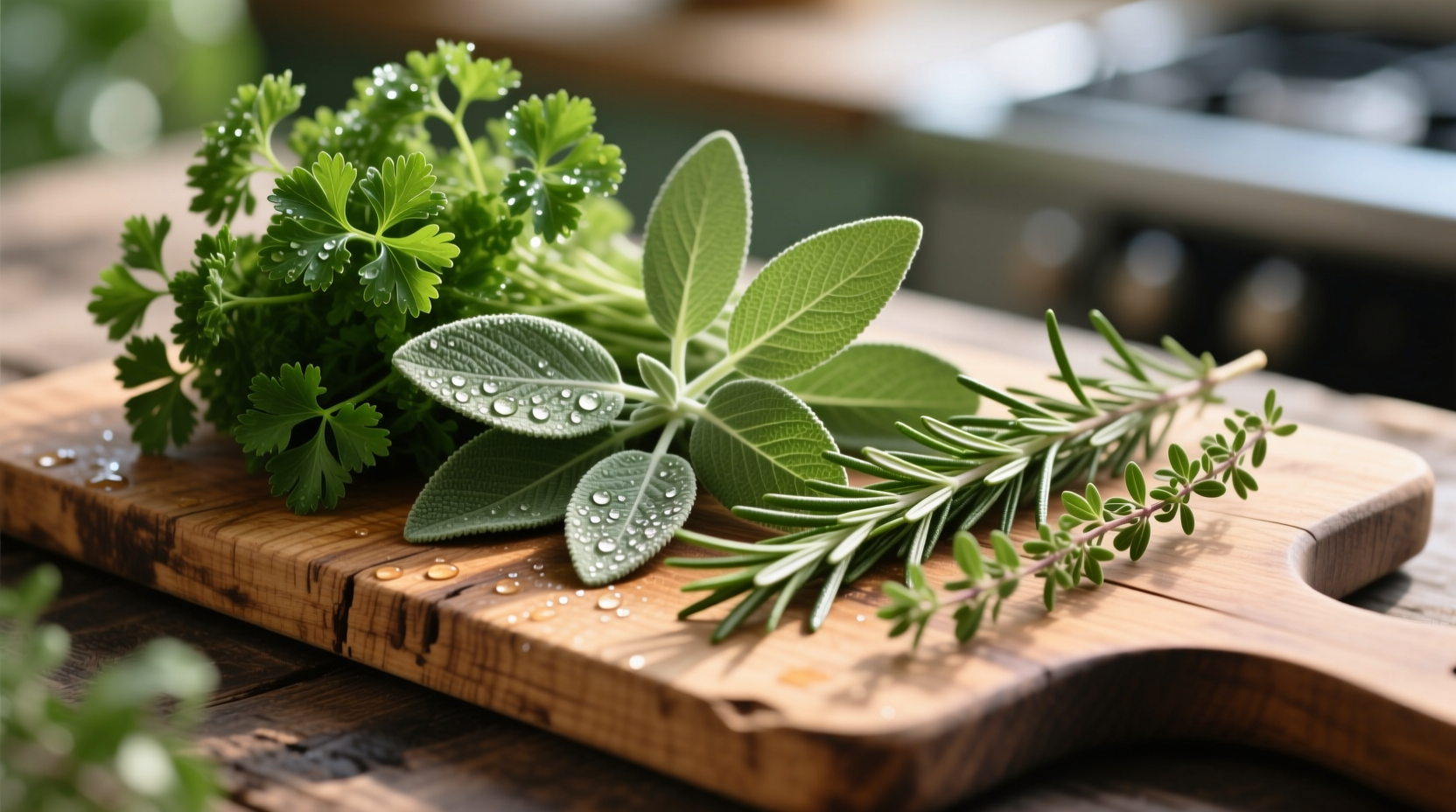These four culinary herbs—parsley, sage, rosemary, and thyme—form a classic European herb combination famously referenced in the traditional ballad “Scarborough Fair.” Each herb brings distinct flavor profiles and culinary applications: parsley offers fresh brightness, sage provides earthy warmth, rosemary delivers pine-like intensity, and thyme contributes subtle floral notes. Understanding their individual characteristics and complementary pairings elevates everyday cooking while connecting modern kitchens to centuries of European culinary tradition.
Why These Four Herbs Captured Our Imagination
When Simon & Garfunkel popularized “Scarborough Fair” in 1966, they introduced millions to this quartet of herbs. But their pairing isn't arbitrary—these four Mediterranean herbs have been cultivated together since Roman times. Historical records from Encyclopædia Britannica show monastic gardens in medieval Europe routinely grouped these herbs for both culinary and medicinal purposes.
Individual Herb Profiles: Flavor Science Meets Tradition
Understanding each herb's chemical composition explains their culinary behavior. The terpene compounds in rosemary and thyme create their distinctive pine-citrus notes, while sage's thujone content delivers its characteristic earthiness. Let's examine each herb's practical applications:
| Herb | Flavor Profile | Best Culinary Applications | When to Add During Cooking |
|---|---|---|---|
| Parsley | Fresh, grassy, slightly peppery | Garnishes, tabbouleh, chimichurri, fish dishes | Raw or added in final minutes |
| Sage | Earthy, slightly peppery, camphor notes | Butter sauces, poultry, sausage, bean dishes | Early for infused flavors, flash-fried as garnish |
| Rosemary | Pine-like, citrusy, resinous | Lamb, roasted potatoes, focaccia, olive oil infusions | Early for roasting, late for delicate dishes |
| Thyme | Floral, minty, subtle lemon | Stocks, stews, tomato sauces, roasted vegetables | Early for flavor development |
Practical Pairing Principles for Home Cooks
Professional kitchens follow specific herb pairing logic that home cooks can easily adopt. The USDA's Human Nutrition Research Center confirms certain herb combinations create synergistic flavor compounds:
Protein Pairing Guide
- Poultry: Sage and thyme form the classic combination, with sage cutting through richness while thyme adds complexity
- Lamb: Rosemary's intensity matches lamb's gaminess, while thyme provides balance
- Fish: Parsley and thyme work best with delicate fish, rosemary suits meatier varieties like salmon
Vegetable Synergies
Research from the University of California's Agriculture Department shows these herbs enhance specific vegetables through volatile compound interactions:
- Root vegetables: Rosemary and thyme amplify natural sweetness during roasting
- Tomatoes: Thyme's thymol content intensifies umami in tomato sauces
- Beans: Sage reduces gassiness while adding earthy depth

Avoiding Common Herb Mistakes
Even experienced cooks make these four critical errors with these herbs:
When Combinations Fail
Not all these herbs work together in every application. The Royal Horticultural Society identifies specific context boundaries:
- Sage overuse: Its strong flavor dominates delicate dishes—use sparingly with fish or light sauces
- Rosemary with sweets: Its resinous quality clashes with desserts (except lemon-based)
- Parsley stems in stocks: They add bitter notes—use only leaves for finishing
- Thyme in creamy sauces: Its subtle flavor gets lost—use tarragon instead
Preservation Techniques That Maintain Flavor
Proper storage preserves volatile oils that create these herbs' distinctive flavors. Based on food science research from Cornell University's Food Preservation Lab:
Drying Methods Compared
- Air drying: Best for rosemary and thyme (retain 70-80% flavor compounds)
- Freezing in oil: Ideal for sage and parsley (preserves 90% volatile oils)
- Vinegar infusions: Works well for thyme in salad dressings
Never refrigerate dry herbs—moisture destroys their essential oils. Instead, store dried herbs in airtight containers away from light and heat for maximum shelf life.
Signature Dishes That Showcase These Herbs
These classic preparations demonstrate each herb's unique contribution:
Parsley—Tabbouleh with Lemon Vinaigrette
Use flat-leaf parsley (not curly) as the primary ingredient, comprising 75% of the dish. The parsley's apiole content creates a clean finish that balances bulgur's nuttiness.
Sage—Brown Butter Sauce
Simmer fresh sage leaves in butter until crisp. The Maillard reaction between sage's amino acids and butter's proteins creates nutty complexity perfect for pasta or gnocchi.
Rosemary—Lemon-Rosemary Roasted Chicken
Insert rosemary sprigs under poultry skin. The herb's camphor compounds penetrate fat layers, creating aromatic steam that infuses the meat from within.
Thyme—Bouquet Garni for Stocks
Tie thyme with parsley stems and bay leaf. Thyme's thymol slowly releases during simmering, creating foundational flavor without overpowering.
Historical Evolution of This Herb Quartet
This specific combination has evolved through distinct historical phases:
- Roman Era (1st-5th century): Sage documented in Pliny the Elder's Natural History for medicinal use
- Medieval Period (5th-15th century): Monastic gardens standardized these four herbs for “Four Thieves Vinegar” plague remedy
- Renaissance (16th-17th century): Herbals like Gerard's Herball codified culinary applications
- Modern Era (20th century-present): Scientific analysis confirms traditional pairings align with flavor chemistry
Understanding this timeline helps contextualize why these particular herbs became culturally linked beyond the famous song reference.











 浙公网安备
33010002000092号
浙公网安备
33010002000092号 浙B2-20120091-4
浙B2-20120091-4